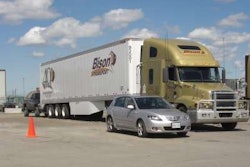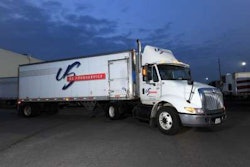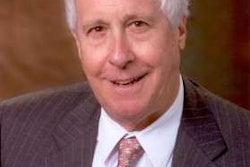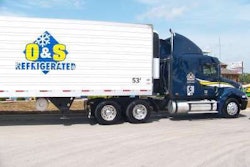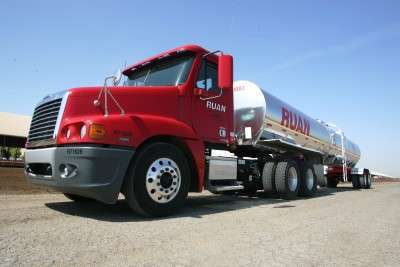 "I think there is very strong belief that distribution could be run so much more efficiently." -- Jim Mulvenna, vice president and general manager of West Coast operations
"I think there is very strong belief that distribution could be run so much more efficiently." -- Jim Mulvenna, vice president and general manager of West Coast operationsIn 2006 and 2007, Ruan Transport acquired two large West Coast dairy haulers and added dairy operations to its full-service transportation management, dedicated carriage, logistics and brokerage services.
In one sense, the expansion of its dairy operations returned the company to its roots. Throughout the 1940s and 1950s, the Des Moines, Iowa-based company was the nation’s largest dairy hauler, says Jim Mulvenna, vice president and general manager of West Coast operations. While the dairy business has changed over the years, Ruan is using its present size and expertise to address some pressing concerns in the industry.
Many of the trucking companies that service the dairy industry are small outfits that run static routes to transport milk from dairy farms to nearby processing plants. Ruan sees its competitive advantage in its ability to offer customers a comprehensive approach to milk distribution and flexibility to manage the many and sudden changes that occur, Mulvenna says.
Ruan is able to manage large-scale distribution of milk from farms to processing facilities by using advanced technology and planning systems that it developed internally to provide drivers with dynamic real-time dispatch information. Managers can analyze how much time drivers are spending on each route and at each stop for milk pickups, Mulvenna says.
Carbon smarts
Given Ruan’s scope within the dairy industry as a transportation provider, it was natural that the carrier would seek out ways to help the industry. Like many other businesses, dairies are eager to show a commitment to environmental stewardship – especially reducing emissions of greenhouse gases (GHGs).
Ruan – seeing an opportunity to improve efficiency and reduce carbon emissions for its own vehicles and the entire dairy industry – recently partnered with the Innovation Center for U.S. Dairy for its new Environmentally Sustainable Methods for Achieving Responsible Transportation (E-SMART) project.
“Creating a more sustainable dairy supply chain significantly benefits everyone from dairy farmers to American families that enjoy dairy products,” Mulvenna says. “As an E-SMART leader, Ruan will create and implement responsible model procedures that other trucking companies can also adopt to achieve greater sustainability and fuel efficiency.”
As co-chair of the E-SMART project, Mulvenna will be working with trucking companies in the dairy industry to implement fuel-efficiency best practices to reduce GHG emissions, while saving money on fuel costs. The other co-chair of E-SMART is Dave Crowley, environmental health and safety director of H.P. Hood, one of the nation’s largest dairy operators.
The E-SMART project has an ambitious goal to reduce GHG emissions from fluid milk transport by 20 percent by 2020. The Innovation Center for U.S. Dairy is supported and staffed by Dairy Management Inc., a nonprofit organization that works to increase demand for and drive sales of dairy products and ingredients on behalf of America’s dairy producers.
GHG emissions in the transport and distribution links of the fluid milk value chain come almost entirely from diesel fuel use in trucks, with a much smaller source coming from refrigeration. Both add up to 824,000 metric tons annually, which is about 3 percent of fluid milk’s total GHG emissions, says Rick Naczi, executive vice president of strategic industry analysis and evaluation at Dairy Management Inc.
For the first phase of the E-SMART initiative, Mulvenna is helping to promote voluntary participation in the U.S. Environmental Protection Agency’s SmartWay program, which aims to reduce the impact of freight transport on the environment through fuel-efficient technologies and practices.
SmartWay is designed for long-haul trucking, but additional efficiency opportunities exist in the dairy value chain, Naczi says. Applying retrofits to trucks can reduce each truck’s fuel consumption by more than 8 percent while driving, and up to 60 percent while idling. Behavioral changes on the part of drivers have the potential to improve fuel efficiency by 5 percent to 25 percent.
Equipment aerodynamics, speeds, driver habits and other fuel-saving measures already are well known in the trucking industry. Mulvenna believes the greater opportunity may be to develop dairy-specific transportation and distribution guidelines for E-SMART. He also believes the more Ruan becomes involved in customers’ distribution systems, the better service and cost it can offer. “If you want to hire us just to haul milk for the cheapest rate, we can do that, but we can do so much more if we can take a look at the distribution design and help optimize it.”
On a large scale, Mulvenna is working to make milk distribution more efficient by reducing the number of trucks on the road and reducing idling at dairy farms and processing plants. Recently, a customer questioned Ruan about why the company was charging more for a stop charge in one area than another. The more expensive stop charge was due to the customer taking 50 percent longer to pump milk because it was using single-phase power.
“If you have triple-phase power, we charge less,” Mulvenna says. Based on that advice, Ruan’s customer plans to convert its milk pumps from single- to three-phase power. The investment will be paid back within a year by reducing stop charges, he says.
Opening a conduit
Milk distribution generally operates most efficiently when the product is shipped from the farm to the closest processing facilities. Carriers do not always take the initiative to propose new ideas and solutions to customers because shorter routes equal less miles and less pay.
Ruan recently worked with one of its larger customers to increase the number of loads delivered to nearby processing plants – within 10 miles of its farms – from 85 to 92 percent. This change resulted in a 4 percent decrease in transportation costs for the customer, Mulvenna says.
“There are certain things we bring to the table,” he says. “We would love to get our hands on distribution systems and analyze them. But as a for-hire trucking contractor, you are only invited so far into the distribution systems.” One of the benefits of being an E-SMART co-chair is that many of the people involved in dairy distribution already belong to Dairy Management Inc.
Another problem is wait times at processing plants, Mulvenna says, but customers now are taking note of that. Since all of the players involved in the dairy production chain are members of Dairy Management Inc., getting involved in E-SMART is a great opportunity for carriers to be heard, he says.
Mulvenna says his E-SMART involvements and Ruan’s influence in the dairy industry have helped opened up a conduit for other carriers to bring ideas to the table. “When I go to conferences, we’ll capture our lessons learned about what the smaller carriers are interested in and what they are concerned about, and the distribution channel effect on their business. I think there is very strong belief that distribution could be run so much more efficiently.”



